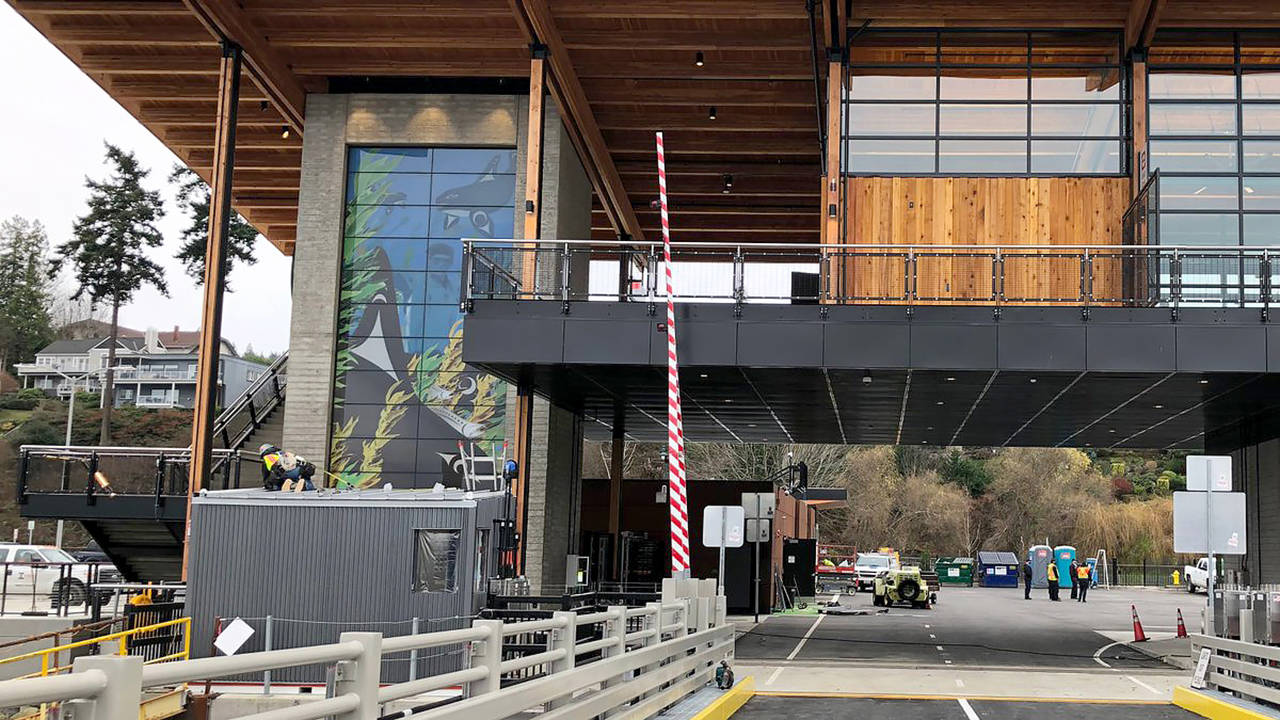Establishing passenger-only ferry service between Everett and Clinton on Whidbey Island could take years and cost millions of dollars, a new study determined.
It’s one of seven car-free ferry routes evaluated in a recently published conceptual feasibility study by the Puget Sound Regional Council.
The report was submitted to the state Legislature. Other than a Bellingham-to-Friday Harbor on San Juan Island connection, the rest of the candidate routes include a destination in Seattle.
“This is certainly worthy of some further study,” said Paul Roberts, an Everett City Council member and a Puget Sound Regional Council transportation board member, who had not yet read the study. “But protecting the working waterfront (in Everett) is pretty critical. Natural deep water, you don’t make that; it’s either there or it isn’t.”
Turning the study’s estimates, evaluations and findings into an operation could take several years and millions of dollars for docks, landings and vessels, plus stable funding beyond that for operations.
In 2007, King County assumed control of the West Seattle ferry service — it runs from that neighborhood to downtown Seattle, across Elliott Bay — from the state after the Legislature directed Washington State Ferries to end passenger-only ferry operations.
After the Puget Sound Regional Council published a passenger ferry study in 2008, a new public-run service wasn’t created for another eight years, until Kitsap Transit secured funding for its Fast Ferry to operate out of Bremerton and Kingston to Seattle.
Prior to the pandemic seizing Washington and the country last year, the Fast Ferry had 37,212 riders in February, according to Kitsap Transit data. That plummeted to 10,661 riders in April and never reached 20,000 the rest of the year.
Ridership also declined in the Washington State Ferries system about 41.4 percent overall. But the drop wasn’t as dramatic at two of the busiest routes, from Edmonds and from Mukilteo, where ridership fell 28.8 percent and 25.7 percent, respectively.
“The marine highway system is really critical,” Roberts said. “Obviously, we have a lot of islands and water, so moving people around is really vital.”
The study considered a route’s candidacy based on travel time saved; ridership estimates; access and land use; costs, fares and fare structure; community/stakeholder support; and environmental impact. Initially, 45 route combinations were reviewed and winnowed to the eventual seven chosen for individual profiles in the report.
That criteria eliminated a survey’s popular write-in route, between Camano Island and Everett, because of confined waters and incompatible land use.
Of the evaluated routes, the one between Everett and Clinton was ranked seventh. Annual costs were estimated at over $1.7 million.
Aboard a state ferry, riders would save an estimated 30 minutes over driving. The report considered it a commute-focused trip and envisioned it with three morning and three afternoon sailings, each taking 20 minutes.
There was low regional interest in survey responses but high interest among Island and Snohomish county respondents, according to the study. Ridership is estimated at 60 per weekday and 14,500 per year, which the study acknowledged was low.
One challenge of making it a true commuter route is the lack of transit connections to the Everett waterfront. In 2020, city leaders cut the Everett Transit bus route that looped between the waterfront, Everett Community College and Everett Station, where people can board other buses and the Sounder commuter train to Seattle. Cutting that route was proposed again this year.
Another concern is that the passenger-only ferry dock and float at the Clinton Ferry Terminal on Whidbey Island needs replacement.
Service from there to Everett would provide another transportation option if the state ferries system or the Deception Pass bridge, the only fixed connection to the mainland, can’t be crossed. The short distance between Clinton and Everett makes it a top candidate for an electric vessel, according to the study.
Passenger surges in summer could warrant weekend service. The study also notes that a stop at private Hat Island would be possible.
The study identifies the Port of Everett’s Guest Dock 1 as mostly ready to host such a ferry, with some work needed for ticketing and signage.
Everett probably won’t follow Kitsap Transit’s lead and seek to run a passenger ferry. The city’s looking at ways to reduce services and expenses, and one of the primary candidates is seeking voter approval to merge its bus service with another agency.
Similarly, Community Transit doesn’t have plans to operate a ferry service, spokesman Martin Munguia said.
That could leave any passenger ferry service between Everett and Clinton up to a private company.
Needed infrastructure investments present a barrier, as well.
Building a new dock was estimated to cost between $5 million and $35 million, according to the study.
A 150-passenger ferry capable of going 35 knots, which is identified as optimal for the Everett-to-Clinton route, could cost $9.5 million.
As for that trip to Friday Harbor from Bellingham, it had an estimated annual cost of over $2 million. An estimated 120 riders would use it per day, or 21,200 each year.
• Have a question? Call 425-339-3037 or email to streetsmarts@heraldnet.com. Include first and last name and city of residence.



